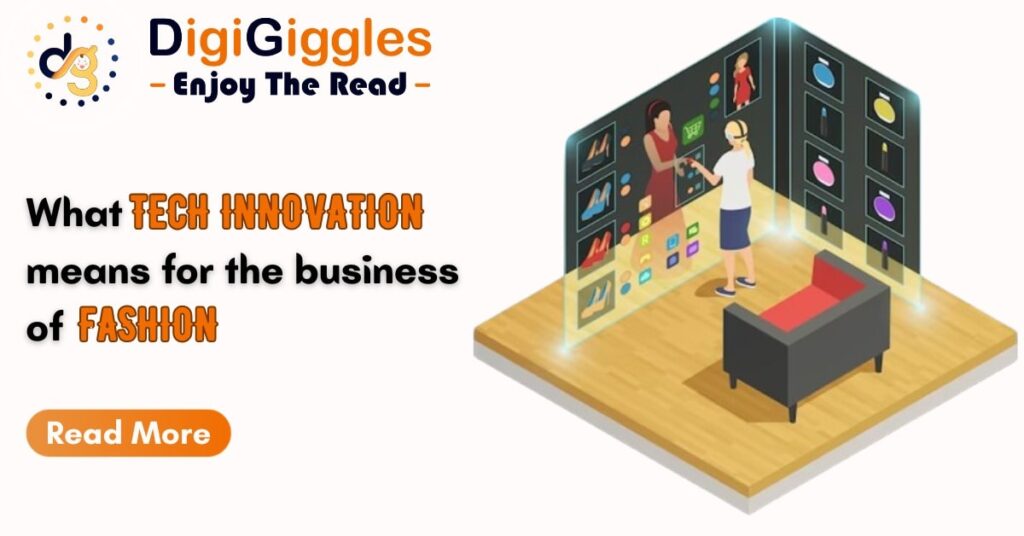
In today’s dynamic and ever-evolving world, technology is rapidly transforming every aspect of our lives, and the fashion industry is no exception. From design and production to retail and consumer experiences, tech innovation is revolutionizing the way we create, consume, and interact with fashion.
As we dive headfirst into the era of smart fabrics, virtual runways, and algorithms dictating our wardrobe choices, it’s time to unravel the intricate tapestry of what tech innovation truly means for the business of fashion. So, grab your digital seam rippers and AI-powered fashion goggles – we’re about to explore a runway where code meets couture, and bytes blend seamlessly with fabrics.
From Sketches to Digital Prototypes
In the realm of fashion design, technology has introduced a plethora of tools that empower designers to unleash their creativity and streamline the design process. Computer-aided design (CAD) software has become an indispensable tool for creating intricate patterns and designs, while 3D modeling and visualization technologies allow designers to bring their creations to life in a virtual world.
Tech innovation has also revolutionized the production process, enabling faster turnaround times and greater efficiency. Automated cutting machines, for instance, can precisely cut fabric patterns, reducing waste and labor costs. Additionally, advancements in textile manufacturing have led to the development of innovative fabrics with enhanced properties, such as water resistance, wrinkle resistance, and sustainability.
Nowadays Artificial Intelligence (AI) is no longer confined to sci-fi, it’s the design assistant every fashion house dreams of. From predicting trends to optimizing supply chains, AI is stitching intelligence into the very fabric of the fashion business. It’s like having a virtual Coco Chanel whispering, “Simplicity is the keynote of true elegance” – only this time, it’s a computer algorithm optimizing design simplicity for maximum elegance.
Trying Before Buying in the Digital Dressing Room
Remember the dread of ordering online and praying that the dress fits? Enter virtual fittings, the superhero sidekick of online shopping. With augmented reality (AR) and virtual reality (VR), consumers can now try before they buy, all from the comfort of their digital dressing rooms. It’s like having a personal stylist who understands your body shape and saves you from the heartache of returns. Because in the world of tech and style, nobody wants fashion faux pas – especially not your virtual avatar.
If Neo from “The Matrix” designed a wardrobe, it would probably be filled with smart fabrics. From color-changing threads to fabrics that monitor your health, the integration of technology into textiles is reshaping the very essence of what we wear. It’s no longer just about style; it’s about a symbiotic relationship between the clothes and the wearer. Picture a dress that adjusts its temperature based on your surroundings – now that’s fashion meeting the matrix in the chicest way possible.
Seamless Shopping Experiences
The retail landscape is undergoing a dramatic transformation as technology redefines the way consumers interact with fashion brands. E-commerce has become a dominant force, offering a convenient and personalized shopping experience from the comfort of one’s home. Virtual reality (VR) and augmented reality (AR) technologies are further enhancing the online shopping experience by allowing consumers to virtually try on clothes and accessories.
In physical stores, technology is transforming the way brands engage with customers. Interactive displays, personalized recommendations, and seamless payment solutions are creating more engaging and efficient shopping experiences. Additionally, data analytics is enabling brands to gain deeper insights into customer behavior, allowing them to tailor their offerings and marketing strategies accordingly.
Embracing Tech for a Greener Industry
In response, tech innovation is playing a crucial role in promoting sustainable practices. From developing sustainable fabrics and dyes to optimizing supply chains and reducing waste, technology is providing solutions to minimize the industry’s environmental footprint.
Additionally, blockchain technology is emerging as a transformative tool for enhancing transparency and traceability throughout the fashion supply chain. This technology can track the origin of raw materials, ensuring ethical sourcing and preventing counterfeit products.
A Tech-Driven Landscape
As technology continues to evolve at an unprecedented pace, the future of fashion is undoubtedly intertwined with innovation. We can expect to see even more sophisticated design tools, immersive virtual shopping experiences, and personalized product recommendations based on individual preferences.
Moreover, technology will play a pivotal role in addressing the industry’s sustainability challenges. From closed-loop production systems that eliminate waste to the development of biodegradable and recyclable fabrics, technology will provide solutions for a more environmentally conscious fashion industry.
Social Media Runways and the Fashion Democracy
In the age of Instagram and Twitter, fashion shows are no longer exclusive events for the elite. Social media runways have transformed the fashion landscape into a democratic spectacle where hashtags and likes dictate trends. The once closed-off world of high fashion is now a click away for anyone with a smartphone. It’s like sitting in the front row of a fashion show without needing a golden ticket – just a golden WiFi connection.
Conclusion
In a world grappling with climate change, fashion is donning its eco-tech couture. Sustainable materials, recycling programs, and eco-friendly. The fashion industry is undergoing a profound transformation, driven by the relentless pace of technological advancement. While these changes may seem daunting, they also present a wealth of opportunities for brands to innovate, adapt, and thrive in the new era of fashion. By embracing technology and using it responsibly, the fashion industry can create a more sustainable, inclusive, and personalized future for consumers.